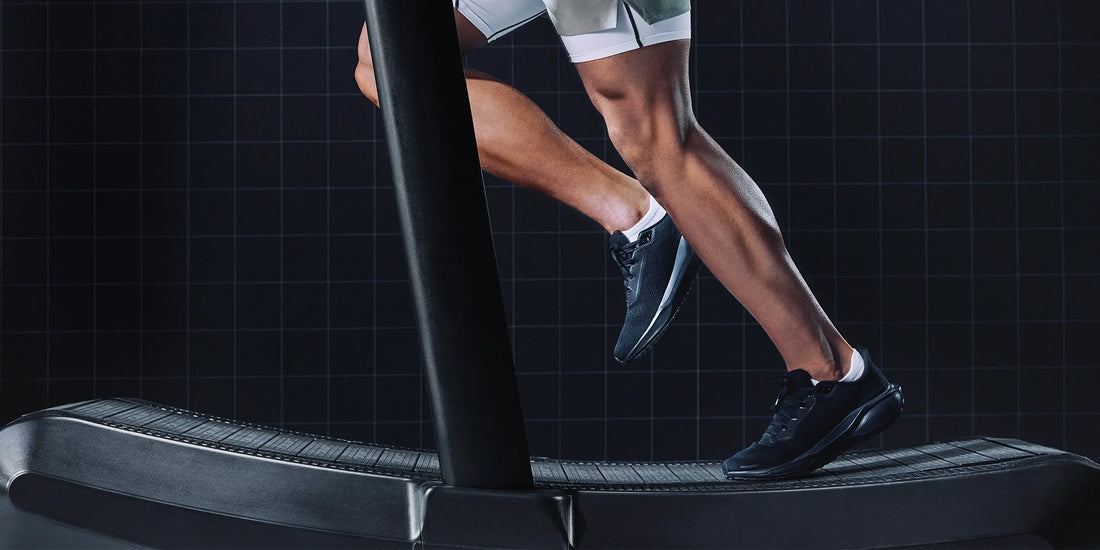You may not know what a flat foot is, but judging from the way the term is used, you know you don't want one. Being caught flat-footed is a negative term implying you can't react quickly. Of course, that perception is wrong.
People with flat feet may feel that their feet are abnormal, but that's simply not true. Everyone's foot is different, and if yours are on the flattish side, you can take steps to relieve any pain or discomfort that you may be experiencing.
That's where insoles come in. The right insoles can provide the support and cushioning your feet need, helping to distribute weight evenly and reduce strain on your muscles and joints. But not all insoles are created equal, especially when it comes to flat feet.
The Importance of Proper Insoles for Flat Feet
When you have flat feet, non-supportive squishy gel insoles just won't cut it. Proper insoles for flat feet should provide three key benefits:
-
Arch support: This helps to distribute weight more evenly across your foot.
-
Heel cushioning: Superfeet insoles help position the soft tissue in the heel to absorb shock and reduce strain.
-
Stability: A stable base helps position your feet properly, which can improve your overall joint function and gait.
By wearing insoles, you can experience significant relief from pain and discomfort. Many Superfeet wearers report feeling a difference almost immediately, with long-term benefits becoming apparent over time.
How Superfeet Insoles Address Flat Feet Concerns
At Superfeet, we've developed a range of insoles specifically designed to address the needs of people with flat feet. Our insoles are the result of years of research, biomechanical expertise, and customer feedback.
Our insoles feature a patented shape that cradles your heel and provides firm, yet flexible support along the length of your foot. This design helps to stabilize your foot, alleviating the strain on your ankles, knees, and hips.
The Benefits of Using Superfeet Insoles for Flat Feet
When you choose Superfeet insoles for your flat feet, you're not just buying a product—you're investing in your foot health and overall well-being. Here are some of the benefits our customers with flat feet have reported:
-
Reduced foot pain: The arch support and cushioning in our insoles help to alleviate the discomfort associated with flat feet.
-
Reduced back pain: By properly supporting your feet, our insoles can help reduce back and hip pain.
-
Enhanced stability: The deep heel cup and supportive structure of our insoles provide increased stability, which can help reduce fatigue.
-
Better athletic performance: Many athletes with flat feet find that our insoles help them perform better by providing the support and stability they need during high-impact activities.
-
Increased comfort during long periods of standing: If your job requires you to be on your feet all day, our insoles can help reduce fatigue and discomfort.
-
Prevention of related foot problems: By providing proper support, our insoles can help prevent issues like plantar fasciitis, bunions, and shin splints that are often associated with flat feet.
Remember, everyone's feet are unique, and what works for one person may not work for another. That's why we offer a range of options and encourage you to try different styles to find the one that works best for you.
How to Choose the Right Superfeet Insoles for Your Flat Feet
Selecting the right insoles for your flat feet doesn't have to be complicated. At Superfeet, we've simplified the process to help you find the perfect fit:
-
Consider your activity level: Do you need insoles for everyday wear, athletic activities, or both? We offer different models designed for various activity levels and intensities.
-
Think about your shoe type: Our insoles are designed to fit a variety of shoe styles, from casual shoes to athletic footwear and even dress shoes.
-
Assess your arch height: Even among people with flat feet, there can be variations in arch height. We offer different profiles to accommodate these differences.
-
Consider any specific pain points: If you have particular areas of discomfort, look for insoles that provide extra support or cushioning in those areas.
-
Try different options: Don't be afraid to try a few different styles. Many of our customers find that they prefer different insoles for different activities or shoe types.
-
Consult with a professional: If you're unsure which insoles are best for your flat feet, consider consulting with a podiatrist or visiting a specialty shoe store for a professional fitting.
It may take a little time for your feet to adjust to new insoles. We recommend wearing them for short periods at first and gradually increasing the duration as your feet become accustomed to the new support.
Taking the Next Step Towards Foot Comfort
Living with flat feet doesn't have to mean living with pain and discomfort. With the right insoles, you can support your feet and reduce pain throughout your body. Investing in your foot health is an investment in your overall well-being. Don't let flat feet hold you back from enjoying your daily activities or pursuing your athletic goals.
Written in consultation with and reviewed by Superfeet Biomechanics and Education team members Meredith Wells, PhD and Justin Wager, PhD
